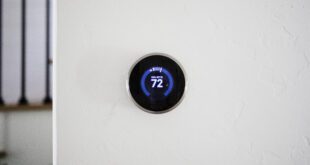Microgrids, Money and the Utility ‘Death Plunge’
 This is the second part of our coverage on microgrids from last week’s Northeast Sustainable Energy Association BuildingEnergy 14 conference in Boston. Read Part I here.
This is the second part of our coverage on microgrids from last week’s Northeast Sustainable Energy Association BuildingEnergy 14 conference in Boston. Read Part I here.
If distributed generation is accelerating the utility death spiral – as some say – will microgrids cause a total utility plunge?
That’s the question Galen Nelson, director of market development at Massachusetts Clean Energy Center, put to microgrid experts at the NESEA BuildingEnergy 14 conference in Boston last week.
The utility death spiral refers to the inability of a utility to pay its fixed costs as sales fall because customers leave to get their electricity from solar or another form of distributed generation. Microgrids often serve large loads, so it seems they could hasten the death spiral, or even make it into a death plunge.
But will that happen?
It depends on the utility, according to Ed Krapels, founder of Anbaric Holding, a company that developers both transmission and microgrids.
“Some distribution companies [utilities] are fantastic and will be immune to the competition that folks like us bring. But others will not be,” Krapels said at the March 6 panel discussion. “This is a big country. We are going to have lots of different efforts here. Some of them will actually fracture the distribution companies into smaller pieces.”
But generally, Krapels said he doesn’t see the death of utilities any time soon. Instead, utilities are likely to act as Microsoft or Apple have in computer markets. They will be “the infrastructure providers on which microgrids are enabled” or the “framework for innovation,” he said. Some utilities might even become microgrid developers or owners. It will be the job of government and regulators to ensure that utilities play fair and do not use their “oligarchy” powers to subvert the market, Krapels said.
Money & Microgrid
But even before the players work out their roles, the microgrid industry needs to determine how it will make its money. Hot debate is underway about how to create revenue streams for microgrids, according to Genevieve Sherman, senior manager at Connecticut’s Clean Energy Finance and Investment Authority.
Energy sales represent an obvious revenue stream, but money might also be made through demand response, ancillary service sales, renewable energy credit sales, or virtual net metering (also called community net metering.) Or regulators might look at creating special rates charged by microgrids that acknowledge the service they provide when islanding and keeping the lights on if the central grid goes down.
“This is an area that a lot of people are focusing on because microgrids are expensive, and we need more ways of really looking at the benefits they provide and putting some kind of value on that,” Sherman said. “People in the microgrid might say, ‘You know what, if I have assurance that I will never lose power, I am willing to pay an additional cent per kWh.’”
What exactly is a microgrid? Even insiders disagree. Microgrids are closely akin to district energy systems. But Sherman distinguishes the two. District energy, she said, links one or more energy sources to energy users, specifically for the provision of thermal energy, heat or cooling, hot water or steam. A microgrid, on the other hand, is a small self-contained electricity network that sometimes includes a district energy system. The microgrid coordinates and distributes energy from one or more generation resources to multiple users in a spatially defined area, she said. And what about a ‘nanogrid’? That is a subset of a microgrid, said Leonard Loomans, co-founder of Acuity Power Group. But a nanogrid does not contain one important element of a microgrid: energy supply. Instead, nanogrids focus more narrowly on load control.
Then there is the challenge of financing these unusual projects, an issue that Connecticut is looking at closely. Treating microgrids like water or sewer projects offers one option, Sherman said. Under this scenario, buildings in the microgrid would pay for the energy facility’s fixed costs through an assessment amortized over 20 years.
Good Places for Microgrids?
Krapels’ company is focusing on large microgrids. He sees strong potential for microgrids in areas where load is growing, such as the Boston Innovation District.

Ed Krapels, Anbaric Holdings Innovation District. Data centers also offer a good market for microgrids because they are one of the few areas of the economy creating exponential electric load growth, he said. Anbaric is exploring microgrid development in Colorado to serve the massive, 200-MW Niobrara Data Center Energy Park.
Data centers underscore the idea that not all electric service is created equal, according to Krapels. Because they need such high quality power, data centers may be willing to pay more for microgrid service. Superstorm Sandy also made apparent the need for electric product differentiation. “We’ve learned that some things are more valuable than others. You want to keep hospitals running, you want to keep police stations open, you want, maybe, to have a community center that is a safe harbor for people who have lost their power.”
To that end, Krapels is looking at building microgrids in storm-threatened areas, such as the Rockaways in New York City. This coastal area was hard hit by Superstorm Sandy. Much of the area is low-to-middle income and contains public housing. The Long Island Power Authority estimates repair and resiliency upgrades will cost $300 million, he said.
“That’s a big number for roughly 100 MW of load. Do the math. That is $3,000 per KW of electric service,” he said. “Our challenge to NY has been, why don’t you build a microgrid. Why doesn’t this become the poster child for a 100 or 50 or 25 MW microgrid? And incorporate into it a very substantial rehabilitation of the heating and cooling system of the New York City Housing Authority.”
On the positive side, district energy systems serve as models for contemporary microgrids. Hundreds exist at universities. The problem is that universities do not “productize,” Krapels said. That’s left now for the market and its regulators to figure out. So we know microgrids do the job, but questions remain about revenue, financing and the utility role.
Elisa Wood is an editor at EnergyEfficiencyMarkets.com. She has been writing about energy for more than two decades for top industry publications. Her work has been picked up by CNN, the New York Times, Reuters, the Wall Street Journal Online and the Washington Post.
 Alternative Energy HQ solar power for homes, wind energy, and bio fuel issues
Alternative Energy HQ solar power for homes, wind energy, and bio fuel issues



 Grid Edge Executive Council Meeting in Boston Featuring ERCOT, GE, Northeast Utilities, EPB
Grid Edge Executive Council Meeting in Boston Featuring ERCOT, GE, Northeast Utilities, EPB






